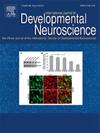Grey matter alterations in generalized anxiety disorder: A voxel-wise meta-analysis of voxel-based morphometry studies
Abstract
Objective
Grey matter, a crucial component of the brain, has been found altered in generalized anxiety disorder (GAD) of several voxel-based morphometry studies. The conclusive and consistent grey matter alterations in GAD have not been confirmed.
Method
Eleven voxel-based morphometry studies of GAD patients were included in the current systematic review and meta-analysis. The linear model of anxiety severity scores was applied to explore the relationship of grey matter alterations and anxiety severity. The subgroup analysis of adult GAD and adolescent GAD was also performed.
Results
Significantly modest grey matter alterations in the left superior temporal gyrus of patients with GAD were found. The anxiety severity score was significantly correlated with grey matter alterations in the right insula, lenticular nucleus, putamen and striatum. The subgroup analysis of adult GAD and adolescent GAD all failed to show significant grey matter alterations. However, in the adult GAD subgroup, anxiety severity score was significantly correlated with grey matter alterations in the right insula.
Conclusion
GAD might have the modest grey matter alterations in the left superior temporal gyrus. Anxiety severity might be related to the grey matter alterations in the limbic regions, such as the right insula, lenticular nucleus, putamen and striatum. This kind of correlation might be related to the effects of adult GAD. Future studies with adequate sample sizes and sophisticated GAD categories will be needed.

 求助内容:
求助内容: 应助结果提醒方式:
应助结果提醒方式:


